![Missoula Montana MT IBS Deep Creek Hellgate Richard Schatz Tom Mousel 1000 Yard 1K 1000yd benchrest]()
Even with a bit of snow left on the ground, some great long range shooting took place up in Montana recently. March 25th, 2017 was opening day for the first 1000-yard IBS match of the year at Montana’s Deep Creek Shooting Range, just outside of Missoula, Montana. With temperatures during both matches at a consistent low to mid 40s and winds blowing at a slight 2-4 mph from the south, the weekend was sure to produce some excellent results.
Framed by forested hills, the Deep Creek Range is a beautiful place to shoot.
![Missoula Montana MT IBS Deep Creek Hellgate Richard Schatz Tom Mousel 1000 Yard 1K 1000yd benchrest]()
CLICK HERE for Deep Creek IBS Match Results | CLICK HERE for LG and HG Equipment List
Jeff Read takes aim…
![Missoula Montana MT IBS Deep Creek Hellgate Richard Schatz Tom Mousel 1000 Yard 1K 1000yd benchrest]()
Fifteen (15) shooters braved the cool Montana spring weather for what would turn out to be a very competitive match. On Saturday, both Richard Schatz and David Torgerson made the first Light Gun (LG) shoot-off, posting two-inch groups, with Richard taking the win (check out his targets above). David and Richard made it into the Heavy Gun (HG) shoot-off as well, this time with David taking the win. Leo Anderson took the LG score crown with a 47, while Shawn Williams took the HG title with a perfect 100.
Here Scott Stanko sets up his Light Gun. Scott won Sunday’s LG shoot-off.
![Missoula Montana MT IBS Deep Creek Hellgate Richard Schatz Tom Mousel 1000 Yard 1K 1000yd benchrest]()
Sunday’s conditions were even better and the shooters took advantage of them. Once again, some truly excellent groups were shot by Tom Mousel and Scott Stanko, both making the LG shoot-off with 2 inch groups. Scott, shown above, prevailed in the shoot-off. Richard Schatz, once again, made his way into the shoot-offs and took the HG win from Tom Mousel with a 4.889″. Jeff Reed took the HG score win over Leo Anderson with a 96. In the LG Score shoot-off, Jim Williams nailed a real stunner of a group, taking the Score win with a 2.018” – 49. Check out the group below. That sure would have helped his Aggs if it happened in the relay!
Jim Williams with his 2.018″- 49 group. That works out to 0.19 MOA — amazing accuracy at 1000 yards.
![Missoula Montana MT IBS Deep Creek Hellgate Richard Schatz Tom Mousel 1000 Yard 1K 1000yd benchrest]()
New Cartridge Debuts — the 6mmBR Ackley Improved (6mm BRA)
The 2017 season has brought some new gear/cartridge developments and many shooters were able to put them to good use in the first match of the year at Deep Creek. Leo Anderson and Tom Mousel were both shooting the new 6mm BRA (6mmBR AI), a 6mmBR Norma with a reduced body taper and a 40 degree (40°) shoulder. Fire-forming is as simple as turning the necks and shooting, as the factory 6mmBR case will headspace in the AI chamber. Sizing with a 6mm Dasher die with .080″ turned off the bottom is the ticket. Tom Mousel, reigning IBS 1K Champ, “believes this case to have a little wider tune window and far less throat wear”. That means this case might be easier on barrels. For Tom’s 6mm BRA with 28” Krieger barrel, the accuracy node is about 2980-2990 fps, so this gives up only 30-50 fps compared to typical Dasher velocities. Both of Tom’s HG groups held in the 3s for vertical, proving the 6mmBR Ackley’s accuracy potential.
![Missoula Montana MT IBS Deep Creek Hellgate Richard Schatz Tom Mousel 1000 Yard 1K 1000yd benchrest]()
Vapor Trail Bullets and Deep Creek Tracker Stock
Tom Jacobs at Vapor Trail Bullets has been working with a new die for his excellent 6mm 103gr Vapor Trail bullet. Four of the weekend’s competitors were shooting bullets off the new Vapor Trail die. The new die seems to be producing a bullet every bit as good as the old die, maybe even better. Several groups in the 2s (two inch) were shot this weekend. As well as Richard Shatz’s impressive 3.671″ 10-shot group in Heavy Gun (see top of this article).
Finally, the new Deep Creek Tracker 4″-wide stock is becoming a favored option, with half of the competitors at the match shooting these stocks from Wheeler Accuracy. That extra inch in the stock’s fore-end seems to be provide more stability and less rocking on the front rest when opening and closing the bolt. Also, the adjustable tracking rudder makes for perfectly parallel tracking surfaces, an absolute “must have”.
![Missoula Montana MT IBS Deep Creek Hellgate Richard Schatz Tom Mousel 1000 Yard 1K 1000yd benchrest]()
The weekend ended with the sun finally breaking through the clouds. Competitors enjoyed some great grilled Polish dogs with all the fixings prepared by Mark and Angie Candau; who also shot in the match. There were plenty of smiling shooters with awards/prizes for their efforts. It was a great opening match of the season!
Here are the Top Guns at the match: Dave Torgeson, Jim Williams, Jeff Read, Shawn Williams, Richard Schatz, Leo Anderson, Lonnie Anderson, and Tom Mousel.
![Missoula Montana MT IBS Deep Creek Hellgate Richard Schatz Tom Mousel 1000 Yard 1K 1000yd benchrest]()
Deep Creek is one of America’s best 1000-yard shooting centers — many records have been set here.
![Missoula Montana MT IBS Deep Creek Hellgate Richard Schatz Tom Mousel 1000 Yard 1K 1000yd benchrest]()
![Missoula Montana MT IBS Deep Creek Hellgate Richard Schatz Tom Mousel 1000 Yard 1K 1000yd benchrest]()
![Missoula Montana MT IBS Deep Creek Hellgate Richard Schatz Tom Mousel 1000 Yard 1K 1000yd benchrest]()
Share the post "1000-Yard Magic at Deep Creek in Montana"




 The 10th Annual
The 10th Annual 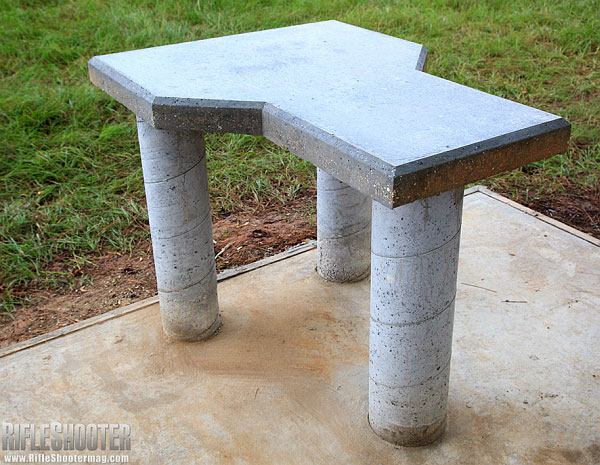



 We know that many of our readers have never seen a “Hammerhead” benchrest stock before. This is a design with an extra wide section in the very front, tapering to a narrow width starting about 6″ back. When paired with a super-wide front sandbag, the hammerhead design provides added stability — just like having a wider track on a racing car. Some folks think mid-range and long-range benchrest stocks can only be 3″ wide. Not so — IBS and NBRSA rules now allow much wider fore-ends. While F-Class Open rules limit fore-end width to 3″ max, there is not such restriction on IBS or NBRSA Light Guns or Heavy Guns for 600- and 1000-yard competition. Here’s a 5″-wide Hammerhead design from
We know that many of our readers have never seen a “Hammerhead” benchrest stock before. This is a design with an extra wide section in the very front, tapering to a narrow width starting about 6″ back. When paired with a super-wide front sandbag, the hammerhead design provides added stability — just like having a wider track on a racing car. Some folks think mid-range and long-range benchrest stocks can only be 3″ wide. Not so — IBS and NBRSA rules now allow much wider fore-ends. While F-Class Open rules limit fore-end width to 3″ max, there is not such restriction on IBS or NBRSA Light Guns or Heavy Guns for 600- and 1000-yard competition. Here’s a 5″-wide Hammerhead design from 









 Dave Scott explains why the Warehouse was so unique:
Dave Scott explains why the Warehouse was so unique:
























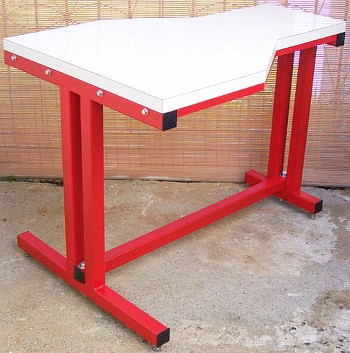












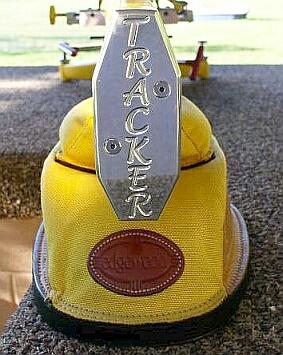 1. Align Front Rest and Rear Bags. We see many shooters whose rear bag is angled left or right relative to the bore axis. This can happen when you rush your set-up. But even if you set the gun up carefully, the rear bag can twist due to recoil or the way your arm contacts the bag. After every shot, make sure your rear bag is aligned properly (this is especially important for bag squeezers who may actually pull the bag out of alignment as they squeeze).
1. Align Front Rest and Rear Bags. We see many shooters whose rear bag is angled left or right relative to the bore axis. This can happen when you rush your set-up. But even if you set the gun up carefully, the rear bag can twist due to recoil or the way your arm contacts the bag. After every shot, make sure your rear bag is aligned properly (this is especially important for bag squeezers who may actually pull the bag out of alignment as they squeeze). 3. Weigh Your Charges — Every One. This may sound obvious, but many folks still rely on a powder measure. Yes we know that most short-range BR shooters throw their charges without weighing, but if you’re going to pre-load for a club match there is no reason NOT to weigh your charges. You may be surprised at how inconsistent your powder measure actually is. One of our testers was recently throwing H4198 charges from a Harrell’s measure for his 30BR. Each charge was then weighed twice with a Denver Instrument lab scale. Our tester found that thrown charges varied by up to 0.7 grains! And that’s with a premium measure.
3. Weigh Your Charges — Every One. This may sound obvious, but many folks still rely on a powder measure. Yes we know that most short-range BR shooters throw their charges without weighing, but if you’re going to pre-load for a club match there is no reason NOT to weigh your charges. You may be surprised at how inconsistent your powder measure actually is. One of our testers was recently throwing H4198 charges from a Harrell’s measure for his 30BR. Each charge was then weighed twice with a Denver Instrument lab scale. Our tester found that thrown charges varied by up to 0.7 grains! And that’s with a premium measure. 5. Check Your Fasteners. Before a match you need to double-check your scope rings or iron sight mounts to ensure everything is tight. Likewise, you should check the tension on the screws/bolts that hold the action in place. Even on a low-recoiling rimfire rifle, action screws or scope rings can come loose during normal firing.
5. Check Your Fasteners. Before a match you need to double-check your scope rings or iron sight mounts to ensure everything is tight. Likewise, you should check the tension on the screws/bolts that hold the action in place. Even on a low-recoiling rimfire rifle, action screws or scope rings can come loose during normal firing.
 There’s a simple, inexpensive “miracle device” that can cut your groups in half. If you’re not using this device, you’re giving away accuracy. The “miracle device” to which we refer is a simple wind indicator aka “windflag”. Using windflags may actually improve your accuracy on target much more than weighing charges to the kernel, or spending your life savings on the “latest and greatest” hardware.
There’s a simple, inexpensive “miracle device” that can cut your groups in half. If you’re not using this device, you’re giving away accuracy. The “miracle device” to which we refer is a simple wind indicator aka “windflag”. Using windflags may actually improve your accuracy on target much more than weighing charges to the kernel, or spending your life savings on the “latest and greatest” hardware.



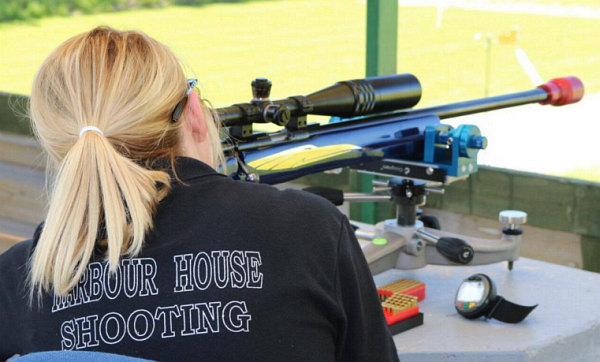








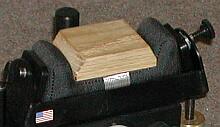 Here’s a simple solution for lumpy front sandbags. Cut a small block the width of your fore-end and place that in the front bag between matches. You can tap it down firmly with a rubber mallet. This will keep the front bag nice and square, without bunching up in the center. That will help your rifle track straight and true. Rick Beginski uses wood (see photo), while our friend John Southwick uses a small block of metal. The metal block might work a little better, but the wood version is easier to make with simple tools. John Loh of
Here’s a simple solution for lumpy front sandbags. Cut a small block the width of your fore-end and place that in the front bag between matches. You can tap it down firmly with a rubber mallet. This will keep the front bag nice and square, without bunching up in the center. That will help your rifle track straight and true. Rick Beginski uses wood (see photo), while our friend John Southwick uses a small block of metal. The metal block might work a little better, but the wood version is easier to make with simple tools. John Loh of 




